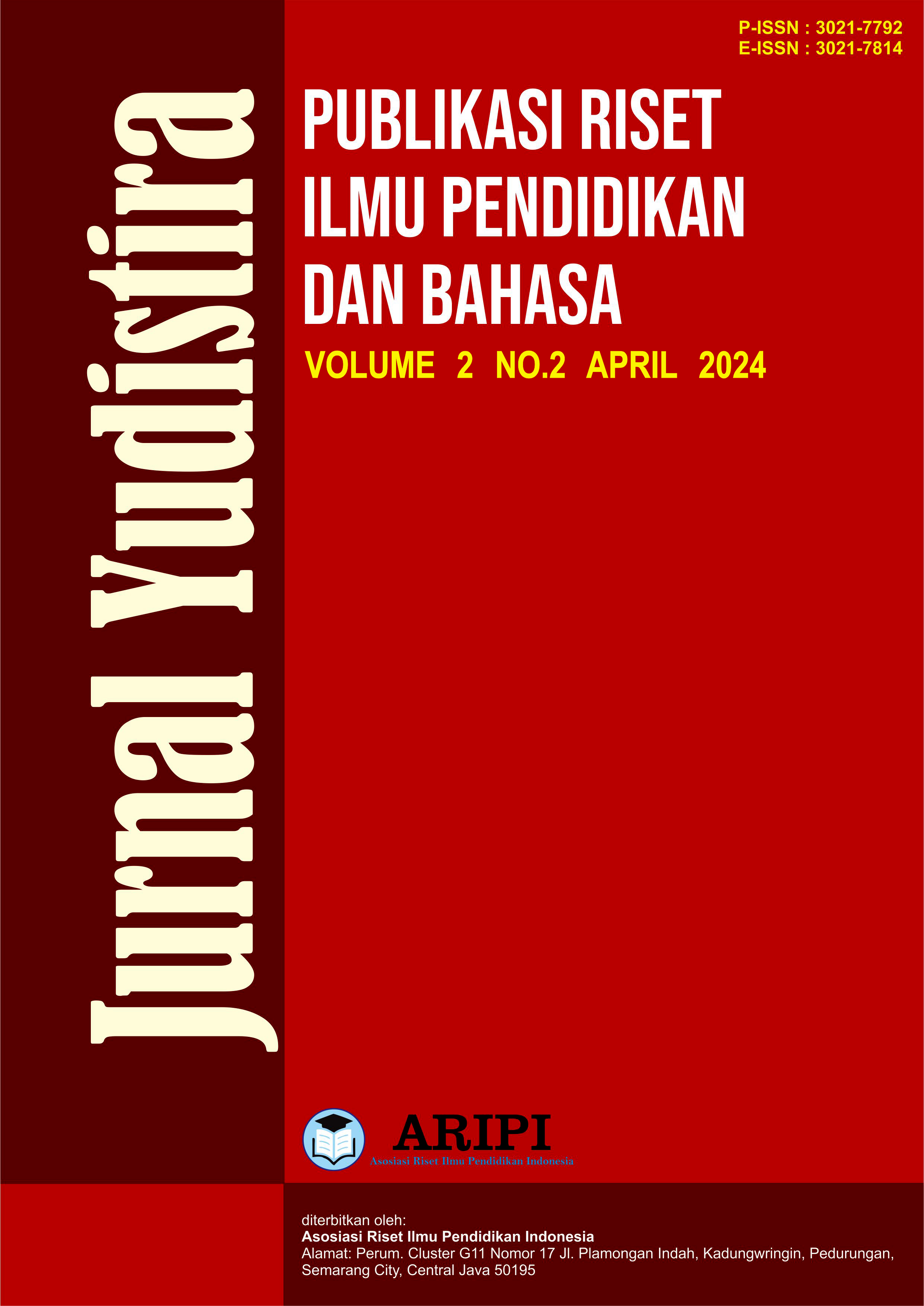Penerapan Model Problem Based Learning Untuk Meningkatkan Hasil Belajar Matematika Tentang Perkalian dan Pembagian Pecahan
DOI:
https://doi.org/10.61132/yudistira.v2i2.686Keywords:
Problem Based Learning (PBL) model, learning outcomes, MathematicsAbstract
Student learning outcomes in learning fractions in elementary school are still low, to overcome this problem an effective model is needed. This research aims to describe the improvement in learning outcomes for multiplication and division of fractions using the PBL model in class V of SD Negeri 057761 Kwala Gebang. The research was carried out in two cycles, namely cycle I and cycle II. Each cycle consists of four stages, namely planning, implementation, observation and reflection. The subjects of this research were 7 class V students at SD Negeri 057761 Kwala Gebang. Research results: RPP observations in cycle I averaged 83.33%, increasing to 97.22% in cycle II. In the observation results from the teacher aspect of cycle I, the average was 73.21%, increasing to 96.42% in cycle II. In the observation results from the student aspect of cycle I, the average was 64.28%, increasing to 92.85% in cycle II. Meanwhile, the learning outcomes of students in cycle I obtained 54.54% completeness, increasing to 95.45% completeness in cycle II. It can be concluded that the PBL model can improve student learning outcomes in learning multiplication and division of fractions in class V of SD Negeri 057761 Kwala Gebang.
Downloads
References
Amiruddin, M.Pd (Ed) Profesi Pendidikan Dan Tenaga Kependidikan (LPPPI) 2018
Arikunto, S. (2013). Prosedur Penelitian. Jakarta: PT Rineka Cipta.
Basrowidan Suwandi. (2008). Memahami Penelitian Kualitatif. Jakarta: Rineka Cipta.Fathurrohman, Muhammad. (2015). Model-model Pembelajaran Inovatif. Yogyakarta: Ar-ruzz Media
Djamarah, S, B dan Zain, A. 2006. Strategi belajar mengajar. Jakarta : Rhineka Cipta
Gazali, Rahmita Yuliana. (2016). Pembelajaran Matemtika yang Bermakna. Jurnal Pendidikan Matematika,
Gunantara, GD, Suarjana, Md, Riastini, Pt Nanci (2014). Penerapan Model Pembelajaran Problem Based Learninguntuk Meningkatkan Kemampuan Pemecahan Masalah Matematika Siswa Kelas V. Jurnal Mimbar PGSD Universitas Pendidikan Ganesha.
Hamruni, 2012. Strategi pembelajaran. Yogyakarta : Insan Madani
Heruman. (2016). Model Pembelajaran Matematika di Sekolah Dasar. Bandung: PT Remaja Rosdakarya
Silaban, P. J. (2019). Penerapan Model Pembelajaran Inkuiri untuk Meningkatkan Hasil Belajar Siswa pada Mata Pelajaran Matematika di Kelas VI SD Negeri 066050 Medan Tahun Pembelajaran 2018/2019. Jurnal Ilmiah Aquinas, 2(1), 107-126.
Silaban, P. J. (2015). Meningkatkan Motivasi Dan Kemampuan Pemahaman Matematis Siswa Melalui Pembelajaran Kooperatif Tipe Tgt Berbantuan Alat Peraga Pada Mata Pelajaran Matematika Di Kelas Vi Sd Methodist-12 Medan Tahun Ajaran 2014 (Doctoral dissertation, UNIMED).
Silaban, P. J., & Hasibuan, A. (2021). Hubungan Lembar Kerja Peserta Didik Berbasis Cat Terhadap Kemampuan Pemahaman Matematis Siswa. Jurnal Ilmiah Aquinas, 4(1), 48-59.
Sobel & Maletsky. (2004). Mengajar Matematika. Jakarta: Erlangga.
Wahyuni. (2010). Kartu Bilangan Dapat dijadikan Alat Peraga dalam PMRI. Diakses melalui http://Kartu Bilangan dapat dijadikan Alat Peraga Dalam PMRI UR’s BLOG
Zai, E., Anzelina, D., & Sinaga, R. (2020). Penerapan model problem based learning untuk meningkatkan hasil belajar tema indahnya kebersamaan di kelas IV. Jurnal Educatio FKIP UNMA, 6(2), 344-349.
Downloads
Published
How to Cite
Issue
Section
License
Copyright (c) 2024 Jurnal Yudistira : Publikasi Riset Ilmu Pendidikan dan Bahasa

This work is licensed under a Creative Commons Attribution-ShareAlike 4.0 International License.






